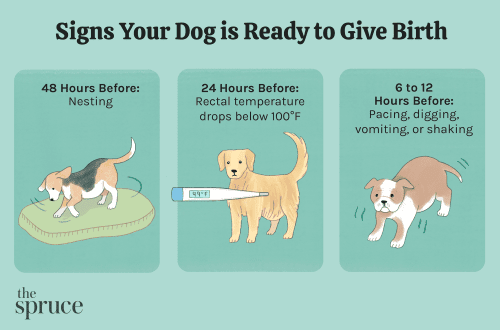
How to understand that a dog is pregnant?

Early diagnosis
Early diagnostic methods include ultrasound and blood tests to determine the level of the hormone relaxin.
Ultrasound examination of the organs of the reproductive system is the gold standard for diagnosis, and it is recommended to be performed on the 21st day of pregnancy. Knowing the time of ovulation minimizes the number of false negative results and allows you to accurately know the gestational age. The advantages include the moderate cost of the procedure, availability and relative safety, as well as the ability to determine the viability of the fetus and the timely detection of pathologies of pregnancy, uterus and ovaries. The disadvantage is the difficulty in determining the exact number of fruits.
The hormone relaxin is produced by the placenta after implantation of the fetus in the uterus, so a blood test to determine it is carried out no earlier than the 21-25th day of pregnancy. There are test systems for determining the level of this hormone in the blood. Lack of information about the time of ovulation can lead to false negative test results, since the actual gestational age is less and implantation has not yet occurred. A positive result does not provide information on the number of fetuses and their viability.
Late diagnosis
Determination of pregnancy using radiography is a method of late diagnosis and possibly not earlier than the 42nd day of pregnancy, but the advantage of this method is a more accurate determination of the number of fetuses and an assessment of the ratio of the size of the puppy and the mother’s pelvis. Unfortunately, in this case, obtaining information about their viability in most cases is impossible.
Planned activities during pregnancy
Following a successful early diagnosis, the veterinarian should make a decision about subsequent visits of the owner with the dog to the clinic and develop an individual plan of action based on the potential risks of pregnancy and childbirth pathologies in a particular dog or breed, the patient’s history of past diseases and risk of exposure to infectious agents. In some cases, a periodic blood test to determine the level of the hormone progesterone and a second ultrasound may be necessary.
Vaccination against canine herpes virus is carried out in seronegative bitches (with a zero antibody titer) and seropositive bitches (with high antibody titers) with an unfavorable history with the Eurican Herpes vaccine twice – during estrus and 10–14 days before delivery.
Clinical examination and ultrasound examination of the reproductive system can be performed several times during the entire period of pregnancy. Starting from the 35-40th day of pregnancy, using ultrasound, you can determine the number of days before delivery. If necessary, a biochemical and general clinical blood test is performed, as well as a blood test to determine the level of the hormone progesterone.
To prevent intrauterine infection of fetuses with helminths, deworming with milbemycin is carried out on the 40th–42nd day of pregnancy.
From the 35th–40th day of pregnancy, the bitch’s diet is increased by 25–30% or puppy food is introduced into it, since from this period the fetuses begin to actively gain weight and the costs of the mother’s body increase. Excessive calcium intake during pregnancy should be avoided as it can lead to postpartum eclampsia, a life-threatening condition characterized by depletion of extracellular calcium stores.
Starting from the 55th day of pregnancy, the owner, in anticipation of childbirth, must measure the body temperature of the dog.
Duration of pregnancy
The duration of pregnancy from the first mating can vary from 58 to 72 days. If the day of ovulation is known, the date of birth is easier to determine – in this case, the duration of pregnancy is 63 +/- 1 day from the day of ovulation.
July 17 2017
Updated: July 6, 2018





